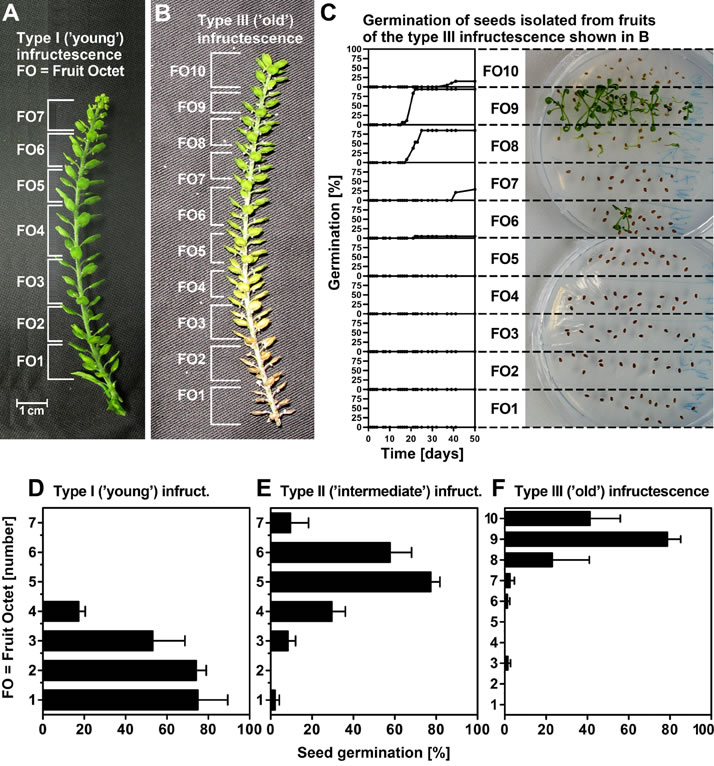Plant Physiology 161: 1903-1917 (2013)
Spatiotemporal seed development analysis provides insight into primary dormancy induction and evolution of the Lepidium DELAY OF GERMINATION1 Genes [W][OA]
School of Biological Sciences, Plant Molecular Science and Centre for Systems and Synthetic Biology, Royal Holloway, University of London, Egham, Surrey TW20 0EX, United Kingdom (KG, AV, GLM);
Web: 'The Seed Biology Place' - www.seedbiology.eu
University of Freiburg, Faculty of Biology, Institute for Biology II, Botany/Plant Physiology, D-79104 Freiburg, Germany (KG, AV, ABM, GLM)
Universität Osnabrück, Fachbereich Biologie, Botanik, D-49069 Osnabrück, Germany (KS, KM)
Received December 24, 2012; Accepted Feburary 19, 2013; Published Feburary 20, 2013.
DOI:10.1104/pp.112.213298

Figure 2. Germination and dormancy as related to the seed maturation gradient within Lepidium papillosum infructescences.
A-C, Experimental separation of type-I ('young') and type-III ('old') infructescences into fruit octets (FOs) and FO-specific analysis of their germination time courses. Note that lack of germination in bottom-part FOs (low numbers) is due to primary dormancy whereas lack of germination in top-part FOs (high numbers) is due to immaturity of seeds.
C, Exemplary seeds from type-III infructescence incubated on germination plates (images at day 39) and germination kinetics.
D-E, Final germination frequency gradients indicative for primary dormancy induction of seeds from FOs of type I ('young'), II ('intermediate'), and III ('old') infructescences. Mean values ± SE of 4 type I, 6 type II, 4 type III infructescences from different plants; final germination percentages were taken from FO (each containing 8 fruits and thereby 16 seeds) time course analyses at 50 days.
| Article in PDF format (2 MB) Supplementary data file (4.9 MB) |
|
|
|
The Seed Biology Place |
Webdesign Gerhard Leubner 2000 |